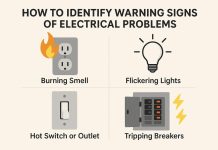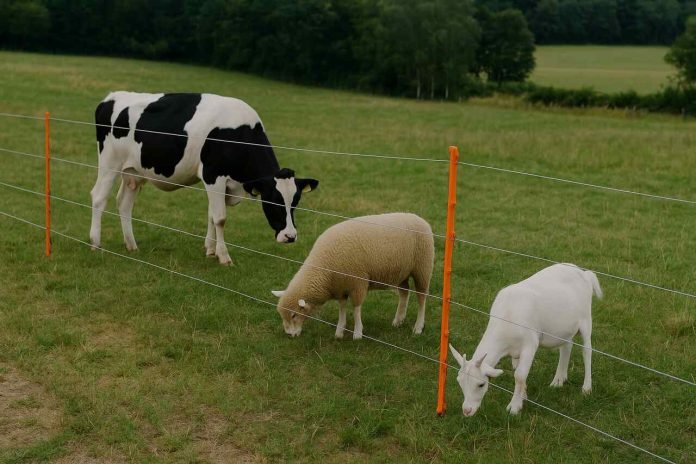Choosing the right portable electric fence system for livestock management is essential for ensuring animal safety and operational flexibility. The best choice involves evaluating factors such as portability, durability, and compatibility with your livestock type to match daily needs and field conditions. A portable system offers convenience for temporary enclosures, rotational grazing, and adaptability to changing environments.
Farmers and ranchers should compare options based on ease of setup, battery life, voltage output, and the reliability of included components. Having the proper electric fencing tools and equipment also makes a significant difference in installation speed and fence effectiveness, helping reduce both stress and maintenance. Efficient livestock management depends on a secure, portable electric fence system that streamlines movement and control without compromising animal well-being. Making practical, informed decisions leads to fewer escapes and stronger herd management.
Key Takeaways
- Evaluate systems for durability, portability, and animal type.
- The right tools make installation and upkeep much easier.
- Smart choices lead to better livestock management and security.
Core Considerations When Selecting a Portable Electric Fence System
Choosing a portable electric fence system requires attention to specific needs, fence construction, and energizer performance. Each area directly impacts animal containment, maintenance requirements, and cost-effectiveness.
Assessing Livestock Needs
Determining which animals require containment is the first step. Goats, sheep, and deer often need different fencing solutions, as goats can slip through gaps and deer require taller systems. Temporary electric fence systems should also take into account animal behavior; for example, nervous animals may test the fence more often, so consistent voltage is important.
Consider the number of animals and their grazing patterns, as this influences the required fence length and layout. High-tensile electric fences or electric netting can suit large herds, while smaller areas may only require a few strands of electrified wire or portable fencing. Matching the system to livestock directly affects safety and effectiveness in livestock containment.
Fence Design and Material Options
Fence design shapes how well the system functions in the field. Electrified wire is lightweight and easy to handle, making it popular for portable setups. Electric netting offers a fast solution for mixed herds but needs stable support from posts. For posts, choose fiberglass or wood for durability—fiberglass is lighter and ideal for rapid setup.
Barbed wire is not recommended for use with electric fencing, as it can injure animals. When installing, maintain proper tension to prevent sagging and select materials that resist corrosion for long outdoor service life. Durability and ease of repair are critical in the best portable electric fences, especially for locations prone to animal pressure or harsh weather. Using high-visibility polywire or tape can help animals notice the fence and reduce accidental contact.
Choosing the Right Fence Energizer
Selecting a portable electric fence energizer is crucial for performance. The energizer—also called an electric fence charger—should match the fence’s total length and the type of animals. Solar fence chargers offer off-grid convenience and lower operating costs, while plug-in models are best for locations with reliable electrical access.
Look for energizers with adjustable output settings to fine-tune shock strength for different animals. High-output models work better for stubborn species and longer temporary electric fences. Always match the energizer to the number of fence strands and the length of wire to avoid power loss. Modern energisers are built for portability and quick installation. Prioritize units with built-in batteries if rotational grazing or field movement is frequent.
Optimizing Your Portable Electric Fencing Setup for Effective Livestock Management
A properly set up portable electric fence is essential for reliable animal containment, effective rotational grazing, and promoting healthy, sustainable pastures. Attention to installation, maintenance, and planning offers flexibility and protection for both livestock and grazing areas.
Installation and Maintenance Best Practices
Successful installation starts by choosing quality posts and conductors suitable for the herd and terrain. Posts should be lightweight for portability but sturdy enough to withstand animal pressure and wind. High-visibility polytape or polywire helps animals see the fence, reducing accidental contact.
Regular maintenance ensures system reliability. Check voltage daily using a fence tester, especially after storms or moves. Clean off vegetation touching the strands, as weeds drain power and reduce effectiveness. Inspect connectors, insulators, and grounding rods, repairing or replacing any worn parts before problems develop. Portable electric fencing is designed for easy installation and quick repairs, which is crucial in emergency situations. Carry spare parts such as extra polywire, insulators, and a basic repair kit. Consistent inspections help prevent escapes and protect livestock from predators.
Configuring Temporary Enclosures and Grazing Areas
Using portable fencing to establish flexible, temporary paddocks allows for precise control of grazing areas and livestock movement. Movable posts and reels enable farmers to quickly adjust enclosure size for herd requirements, grazing intensity, and forage availability.
Quick-release gate handles and secure corner posts increase fence effectiveness and reduce setup time. When creating temporary containment, ensure corners are braced, and the energizer is positioned for optimal energy delivery across the entire enclosure. Avoid sharp turns and sagging tape, as these create weak points. Portable fences are ideal for rotational grazing and temporary containment, allowing herds to be moved rapidly to fresh pasture for better forage use.
Conclusion
Choosing the right portable electric fence system requires a clear understanding of livestock needs, terrain, and usage frequency. The best systems offer reliable containment, simple setup, and flexibility for both temporary and rotational grazing. Evaluating these elements helps ensure safety and efficiency while keeping livestock secure. Thoughtful selection leads to better results and long-term satisfaction with the chosen system.













